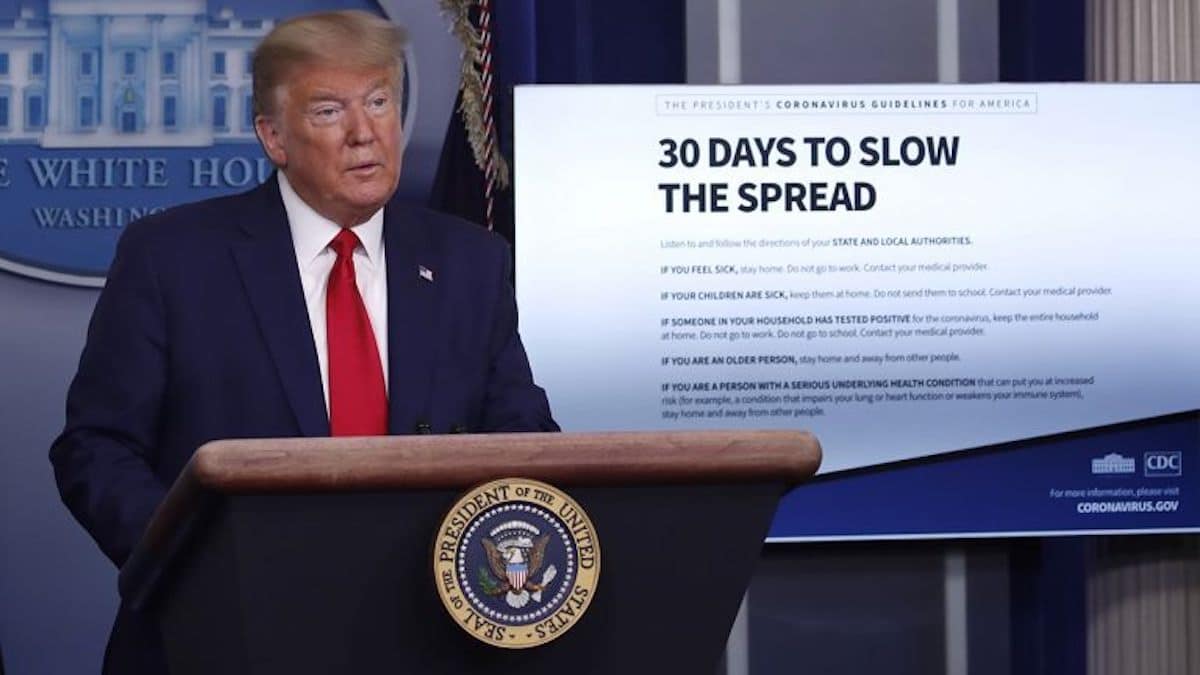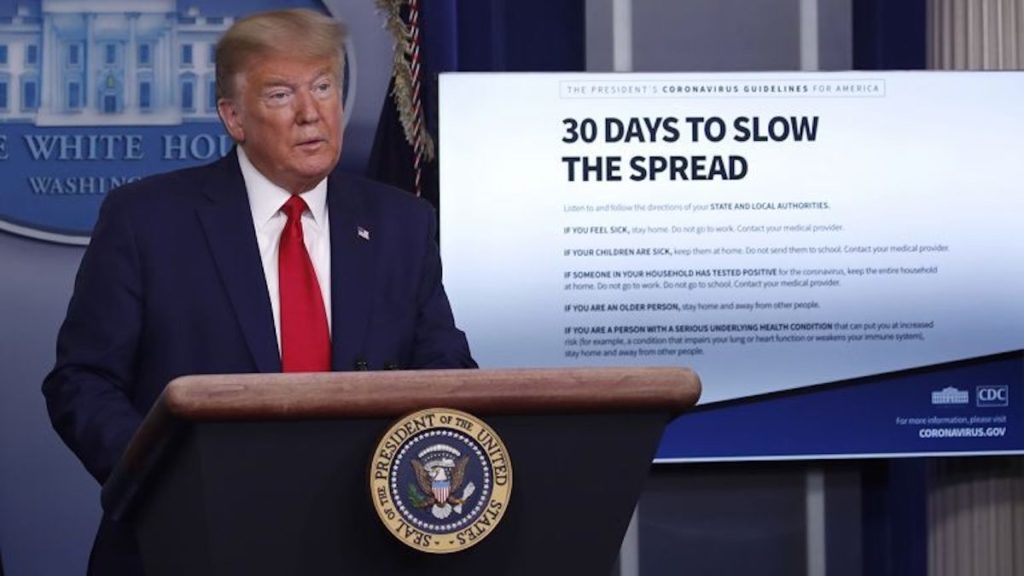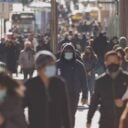
White House Projects 100k to 240k Coronavirus Deaths With Mitigation Efforts
Washington, D.C. (PPD) — President Donald Trump said while there is “some light at the end of the tunnel,” the nation has a “very painful two weeks” ahead. The White House projected — with mitigation efforts — the Chinese Coronavirus (COVID-19) could still result in 100,000 to 240,000 dead in the United States and millions infected.
“We’re going to start seeing some light at the end of the tunnel,” the president said. “But this is going to be a very painful, very painful two weeks.”
“The surge is coming, and it’s coming pretty strong,” he added.

Dr. Anthony Fauci, the Director of the National Institute of Allergy and Infectious Diseases, seemed to caution against modeling.
“I know my modeling colleagues won’t be happy with me, but models are only as good as the data you put into them,” he said.
Still, he argued now is not the time for the country to reverse course, despite the strategy being “inconvenient economically.”
“The reason why we feel so strongly about the necessity of the additional 30 days is that now is the time, whenever you’re having an effect, not to take your foot off the accelerator.”
Dr. Fauci added model projections increase to a range from 1.5 million and 2.2 million deaths without mitigation efforts to contain the spread of the Chinese Coronavirus (COVID-19).
“It is absolutely critical for the American people to follow the guidelines,” President Trump stressed during the briefing. “It’s a matter of life and death.”
The White House unveiled “30 Days to Slow the Spread”, new guidelines after the president decided to extend the strategy he implemented just over two weeks ago. It includes guidance on social distancing, working from home, frequently washing hands, and avoiding any unnecessary travel.
30 DAYS TO SLOW THE SPREAD
- Listen to and follow the directions of your STATE AND LOCAL AUTHORITIES.
- IF YOU FEEL SICK, stay home. Do not go to work. Contact your medical provider.
- IF YOUR CHILDREN ARE SICK, keep them at home. Do not send them to school. Contact your medical provider.
- IF SOMEONE IN YOUR HOUSEHOLD HAS TESTED POSITIVE for the coronavirus, keep the entire household at home. Do not go to work. Do not go to school. Contact your medical provider.
- IF YOU ARE AN OLDER PERSON, stay home and away from other people.
- IF YOU ARE A PERSON WITH A SERIOUS UNDERLYING HEALTH CONDITION that can put you at increased risk (for example, a condition that impairs your lung or heart function or weakens your immune system), stay home and away from other people.
DO YOUR PART TO SLOW THE SPREAD OF THE CORONAVIRUS
Even if you are young, or otherwise health, you are at risk and your activities can increase the risk for others. It is critical that you do your part to slow the spread of the coronavirus.
- Work or engage in schooling FROM HOME whenever possible
- IF YOU WORK IN A CRITICAL INFRASTRUCTURE INDUSTRY, as defined by the Department of Homeland Security, such as healthcare services and pharmaceutical and food supply, you have a special responsibility to maintain your normal work schedule. You and your employers should follow CDC guidance to protect your health at work.
- AVOID SOCIAL GATHERINGS in groups of more than 10 people.
- Avoid eating or drinking at bars, restaurants, and food courts – USE DRIVE-THRU, PICKUP, OR DELIVERY OPTIONS
- AVOID DISCRETIONARY TRAVEL, shopping trips, and social visits
- DO NOT VISIT nursing homes or retirement or long-term care facilities unless to provide critical assistance.
- PRACTICE GOOD HYGIENE: Wash your hands, especially after touching any frequently used item or surface. Avoid touching your face. Sneeze or cough into a tissue, or the inside of your elbow. Disinfect frequently used items and surfaces as much as possible.
- Wash your hands, especially after touching any frequently used item or surface.
- Avoid touching your face.
- Sneeze or cough into a tissue, or the inside of your elbow.
- Disinfect frequently used items and surfaces as much as possible.






